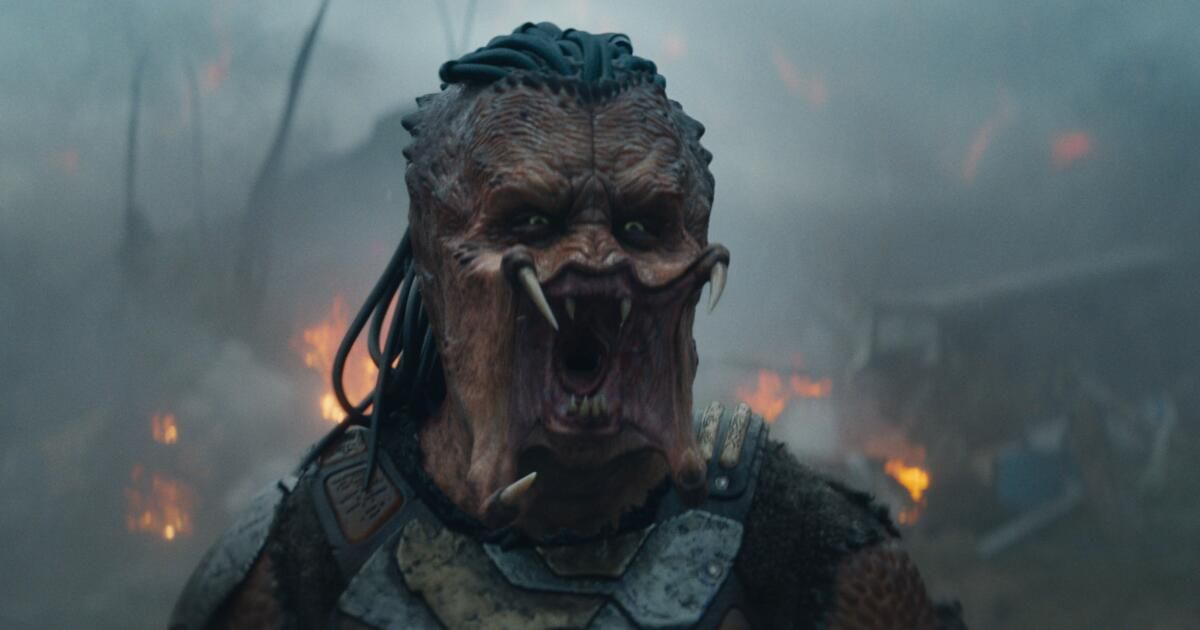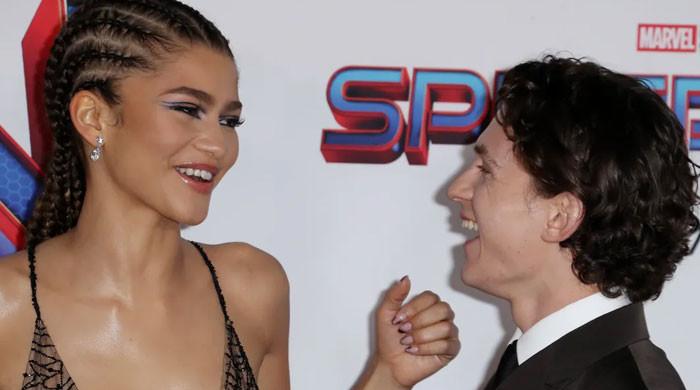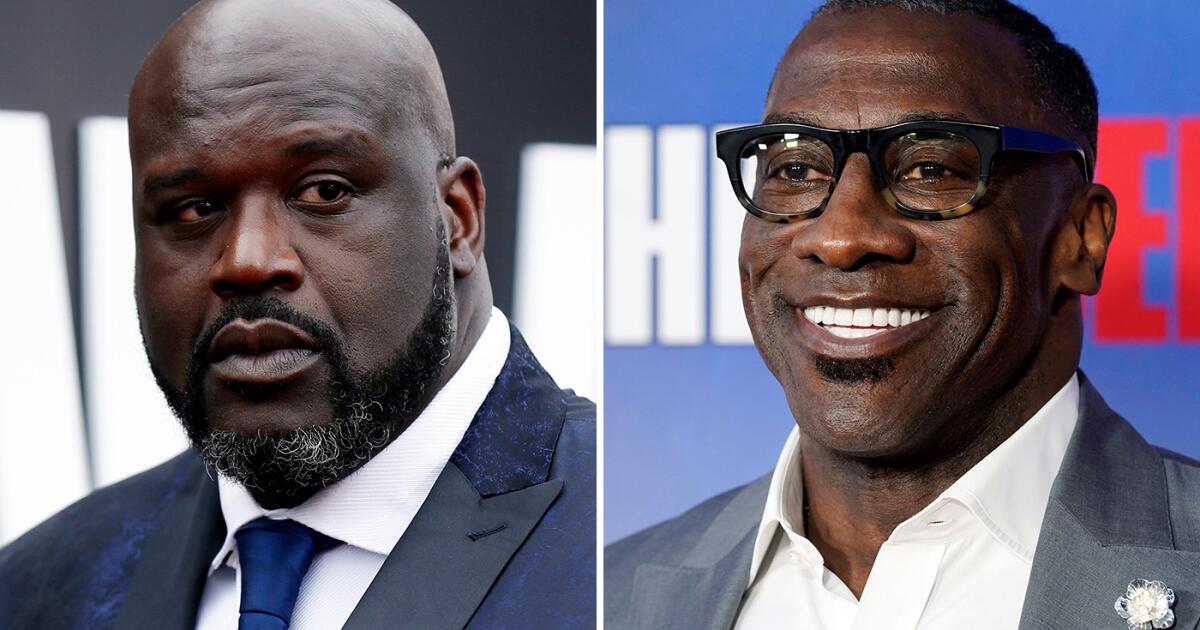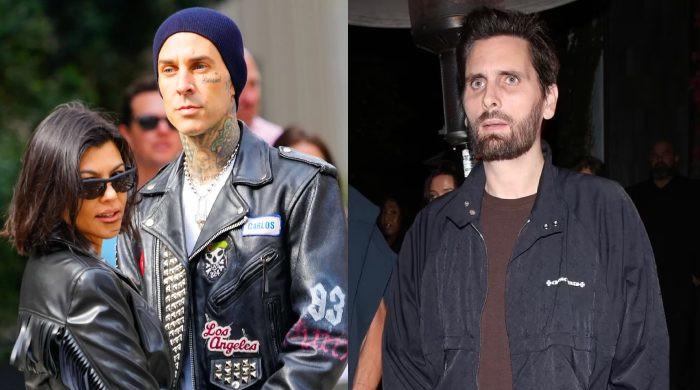When asked how much of the alien language used by the franchise's central hunter species is he capable of speaking, “Predator: Badlands” director Dan Trachtenberg quickly responds: “Zero.”
“My mouth doesn't even allow me to pronounce [even] a phonics from it,” Trachtenberg says of the language created for his film, praising his actors for learning it. Linguist Britton Watkins “really developed the language as if it had evolved from the mouth shape and throat sounds that we heard before 'Predator.' [movies]but it really fits with the ecology of the Yautja species. And my throat doesn't allow me to do it.”
“Predator: Badlands,” which opened to a franchise-record $40 million at the domestic box office, is the first “Predator” installment where one of the alien hunters is the hero. The film follows Dek (Dimitrius Schuster-Koloamatangi), an outcast young Yautja on a quest to prove himself to his clan by hunting a massive, nearly unkillable beast on a deadly planet.
Thia (Elle Fanning) and Dek (Dimitrius Schuster-Koloamatangi) find themselves on a deadly planet in “Predator: Badlands.”
(20th century studies)
During his search, Dek encounters Thia (Elle Fanning), an android who has been separated from the rest of his research group (as well as the lower half of his body) and is happy to provide useful information about the planet's deadly flora and fauna.
For Trachtenberg, who rejuvenated the long-running sci-fi franchise with the 2022 prequel “Prey,” it was important that the Yautja and their culture felt “as authentic and archaeological” as the humans he has portrayed in his “Predator” films, which also include this summer’s animated anthology “Predator: Killer of Killers.”
“I wanted to make sure that the Yautja species were treated seriously and with dignity,” says the filmmaker. “We're asking people to empathize with a monster, with something that, to some extent, was the slasher in a slasher movie, decades ago.”
That meant consulting an expert to fully construct a language for the Yautja. Paul Frommer, the linguist who created the Na'vi language for the “Avatar” films, recommended Watkins for the “Predator: Badlands” team. He was tasked with developing the Yautja language, both spoken and written, first introduced in “Killer of Killers.”
Watkins understood that “Badlands” would include both the kind of action audiences expect from a “Predator” movie and quieter moments where the characters simply talk to each other. This meant creating language that was as faithful as possible to the trills and roars of previous “Predator” films while also being “a tonal match and kind of an atmospheric match” with English for scenes where both languages are used in conversation.
“I started, instead of having a complete language and vocabulary and all that, a framework that I could build as things changed with production,” Watkins says, explaining that this involved creating both phonological and grammatical rules. “I built the framework for a language that was never going to have sounds that didn't belong to it, but that could be expanded in terms of vocabulary and grammar to adapt to what we needed over the long course of filming.”
I also knew that once Yautja was introduced, there would be fans eager to analyze and learn it just as there had been other constructed languages created for science fiction and fantasy movies and television shows.
“I knew… people would want to pause [the movie] and they would want to rewind and they would want to figure it out,” says Watkins. “So I wanted to keep it simple, but not simplified. It is culturally appropriate but accessible as a language. [for] people [that] I want to learn it.”
Here are some tips from Watkins for those interested in learning Yautja.
The alphabet includes complex groups of consonants.

The Yautja alphabet can be seen in the writing on some of the objects in “Predator: Badlands.”
(20th century studies)
When designing the phonology of the Yautja language, Watkins took into account the physiology of the aliens.
“They have no lips, so they cannot do mother either bachelor of arts either fa [sounds] because they don't have the lips to do that,” Watkins explains. “To complement not having F and V and Th and M, we have consonant clusters like jl and cht …which we don’t have in English, but they can be done further down the throat.”
These consonant clusters comprise several letters when written in the Roman alphabet, but are one letter in the Yautja alphabet. The yautja word for prey, for example, begins with the letter hour.
Its alphabet “is optimized for the visual efficiency of your sound system,” says Watkins. Yautja writing can be seen on weapons and other objects in “Badlands.”
The basic sentence structure is the opposite of English.
In Yautja, the structure of a declarative sentence (one that makes a statement, provides a fact, or offers an explanation) is the reverse of that in English.
“The object or predicate comes first, the verb is in the middle and then the subject comes last,” says Watkins. “Once you make a rule like that, you have to keep it unless you have a legitimate reason to break it, like we do in English.”

Dek (Dimitrius Schuster-Koloamatangi) in “Predator: Badlands.”
(20th century studies)
Listen for recurring words
Yautja words are largely analytical, meaning “there are not 14 versions of a single noun,” Watkins explains. This includes the first person pronoun 'I', which in Yautja is chish.
“When it is 'I' at the beginning of the sentence, it is chish [and] when it is 'I' as the subject at the end of the sentence, it is still chish“Watkins says. “It doesn't change.”
Another sound to try to capture is nga. Ngai is the yautja word for 'no', so nga occurs in any word that has a negative element, such as “nobody.”
You can tell how Yautja feel about you by what they call you.
Unlike chishThe Yautja use different words when addressing or referring to others based on respect and affection.
“The words for 'you' and the words for 'he' or 'she' change depending on who is talking about whom,” explains Watkins. “It is culturally appropriate for Yautja, in Yautja culture, [to] talk about other people in a pejorative way.”
Think of it a little like the difference between using you either you in Spanish. When addressing someone they belittle or disrespect, the Yautja use wulwhile someone they respect would be treated like dau. Kai is the word used when addressing a close friend.
Yautja is not a gendered language (for the most part)
Unlike languages such as French and Spanish, Yautja has no grammatical gender, so nouns are not assigned gender categories.
However, there is a gender distinction between the pronouns he and she, much like that in English. Similarly, all Yautja use chish for “I” and “me” regardless of gender.
One of the reasons Yautja has no grammatical gender is because it was more practical.
“There wasn't much time [to create Yautja]and adding gender in that way will add complexity to the language,” says Watkins, explaining that this complexity would have made it more difficult to quickly make any adjustments to the script that needed to be made during the course of filming.
The fact that it also helps keep the language accessible to Yautja students is a plus.












